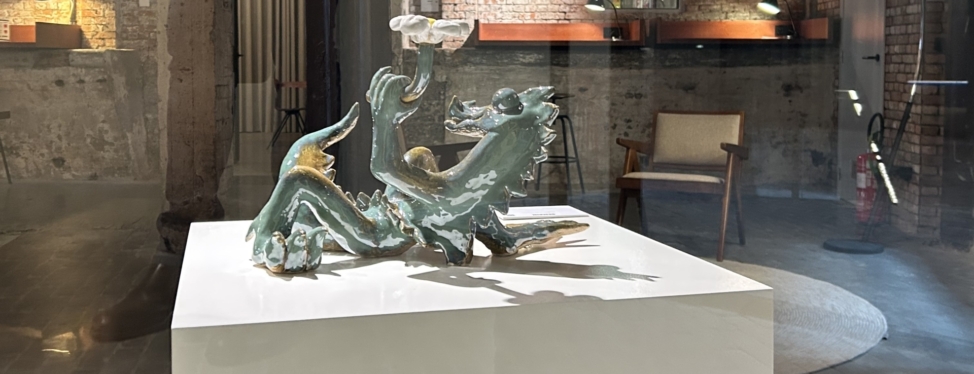In 1804, the young United States purchased 1/3 of its current territory from France for $15 million. That looks like a stupendously good deal for the Americans. But that doesn’t mean France severely lost out in this negotiation. And if there is a winning side at all to this deal, it is perhaps a surprising third party.
In the early 1800s, the port city of New Orleans-situated at the mouth of the Mississippi River-was the focal point of American interest. Although the vast Louisiana Territory comprised about a third of the present-day United States and boasted fertile farmland, attention centered on New Orleans. Control of this port meant control of American commerce flowing down the Mississippi to global markets, a vital concern for President Thomas Jefferson and the young nation’s economy.
Originally claimed by France in the 18th century, Louisiana was ceded to Spain in 1762, only to be secretly returned to France in 1800 under the Treaty of San Ildefonso. For France, Louisiana was less valuable than its Caribbean colony of Saint-Domingue (now Haiti), which was a major source of sugar and other cash crops.The French presence in Louisiana was thin, with few settlers beyond New Orleans and scattered traders along the Mississippi.
The situation grew tense for Americans when, in 1802, the Spanish (still administering Louisiana) revoked the “right of deposit,” preventing U.S. goods from being stored in New Orleans for export. This threatened American trade and prompted Jefferson to instruct his diplomats to negotiate the purchase of New Orleans or at least secure access to the port. Meanwhile, Napoleon Bonaparte’s ambitions in the Americas were crumbling. A devastating slave revolt in Saint-Domingue and the looming threat of renewed war with Britain made Louisiana a liability rather than an asset. Without Saint-Domingue, Louisiana’s value as a granary diminished, and Napoleon needed funds for his European campaigns.
In April 1803, as American envoys Robert Livingston and James Monroe prepared to negotiate for New Orleans, Napoleon’s finance minister, François Barbé-Marbois, surprised them by offering the entire Louisiana Territory for sale. The Americans, lacking explicit authority to buy all of Louisiana, nevertheless quickly seized the opportunity. After rapid negotiations, the two sides agreed on a price of $15 million (80 million francs). Of this sum, $11.25 million would be paid directly to France, while $3.75 million would be used by the U.S. to settle claims by American citizens against France. The purchase treaty was signed on April 30, 1803, and antedated to May 2.
Napoleon Bonaparte and Thomas Jefferson, the central figures behind the Louisiana Purchase, were leaders of expanding nations but were markedly different in character, ambitions, and the constraints shaping their decisions.
At 34, Napoleon Bonaparte ruled France as First Consul, his reputation already cemented as a military genius and a master of political strategy. His goals were grand: to secure France’s dominance in Europe and, initially, to reestablish a French colonial empire in North America.However, a series of setbacks forced him to reconsider. The catastrophic loss of French troops to rebellion and disease in Saint-Domingue (Haiti) shattered his vision of Louisiana as a supply hub for a Caribbean empire. Facing renewed war with Britain, Napoleon’s priorities shifted to consolidating power in Europe and raising funds for impending military campaigns. He also recognized that holding Louisiana would be precarious-vulnerable to British attack and potentially drawing the United States into alliance with his enemies. Selling the territory to the Americans, therefore, was a strategic move: it would provide much-needed cash, remove a liability, and strengthen the U.S. as a counterweight to Britain. Napoleon’s pragmatism and tactical foresight were evident in his willingness to abandon colonial dreams for immediate European advantage, even over the objections of his own ministers and family.
Thomas Jefferson, the third president of the United States, was a scholar, diplomat, and author of the Declaration of Independence, deeply committed to Enlightenment ideals of liberty and individual rights. His vision for America was one of agrarian expansion and republican virtue, and he saw control of the Mississippi River and the port of New Orleans as essential to the young nation’s economic future. Jefferson’s initial goal was modest: to secure New Orleans and ensure American access to the Mississippi. However, when the opportunity arose to purchase the entire Louisiana Territory, he seized it, recognizing the immense potential for national growth.Yet Jefferson was constrained by his strict interpretation of the Constitution, which did not explicitly grant the president authority to acquire new territory. He faced fierce opposition from Federalists, who feared the dilution of their political power and questioned the legality of the purchase. Despite his misgivings, Jefferson prioritized national interest, calling Congress into session early to ratify the treaty and ultimately deciding that the benefits outweighed constitutional uncertainties.
Napoleon and Jefferson were, in many ways, opposites: Napoleon, the audacious conqueror and autocrat, driven by power and realpolitik; Jefferson, the reflective philosopher-president, guided by ideals but willing to compromise for the nation’s good. Their paths converged not through shared values, but through circumstance and necessity-Napoleon’s need for money and strategic advantage, Jefferson’s desire for security and expansion. The Louisiana Purchase, improbable as it seemed, was the product of their distinct ambitions intersecting at a moment when both saw more to gain than to lose. Their contrasting characters and goals, tempered by the constraints of war, politics, and circumstance, made the agreement not only possible but, in the end, inevitable
Structure and Style – How did the discussions unfold, and did anything unusually good or bad happen?
If there is one rule to analyzing professional deals, it’s comparing the deal to the available alternatives. With that in mind, the Louisiana Purchase looks inevitable.
Napoleon could have stationed troops in Louisiana to levy taxes, control trade, or expand into the hinterland. However, this would have required diverting resources from his European campaigns and rebuilding a navy to counter British dominance. After losing 7,000 troops in Haiti to rebellion and disease, France lacked the manpower and funds for sustained colonial operations. As Talleyrand noted, “The English might invade Louisiana without opposition”, making defense impractical; France considered retaining parts of Louisiana while selling New Orleans. However, Napoleon’s “all-or-nothing” approach-rooted in his preference for decisive actions-led him to abandon incrementalism. Partial sales would have generated less revenue ($6–10 million for New Orleans alone) and left France with a fragmented, hard-to-defend territory. Retaining the territory altogether could have allowed France to pressure the United States or Britain diplomatically. Bit Napoleon’s priority was funding his impending war with Britain, not managing a distant colony. The $15 million from the sale provided immediate liquidity, whereas maintaining Louisiana risked costly conflicts without guaranteed returns.
Jefferson initially sought only New Orleans and West Florida to secure Mississippi River access. France’s surprise offer of the entire territory forced a reevaluation. Acquiring the full region preempted future European claims and aligned with Jefferson’s vision of agrarian expansion, even at the cost of constitutional ambiguity. Federalists advocated seizing New Orleans by force, but Jefferson-a diplomat at heart-resisted. The U.S. Army numbered just 3,000 soldiers in 1803, and war with France would have risked British intervention or Spanish opportunism. Moreover, a protracted conflict would have strained the $8.2 million federal budget and derailed debt reduction. Jefferson briefly considered partnering with Britain to counter France, but this conflicted with his anti-entanglement principles. An Anglo-American alliance might have secured New Orleans but entangled the U.S. in European wars and undermined sovereignty.
As to the strike price of the deal, there was also far less wiggle room than one might expect. From Napolean’s perspective, the $15 million sale contrasts with $200K in annual Louisiana customs revenue. For the United States, the purchase’s $675K annual interest (from the financing structure we’ll get to in a minute) strained its $80 million annual budget, but was bearable – and paled to the cost of lost trade or war.
See and seize opportunities? Introduce Barings
Conclusion
Anatomy of the Deal
Credits:
Words: SV
Photos: All Blacks www.ewn.co.za, all others SV
Video: “Mad Men”, pilot episode, AMC





